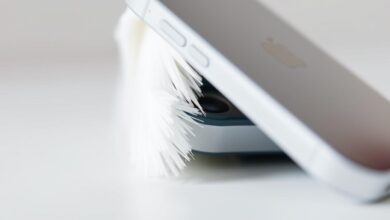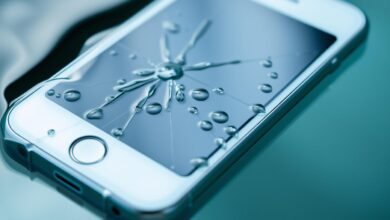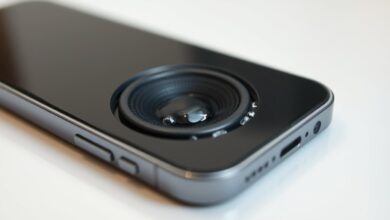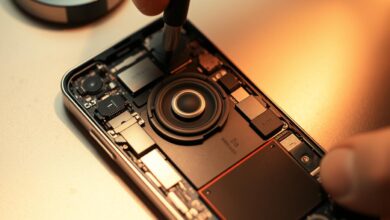how do you get water out of your iphone
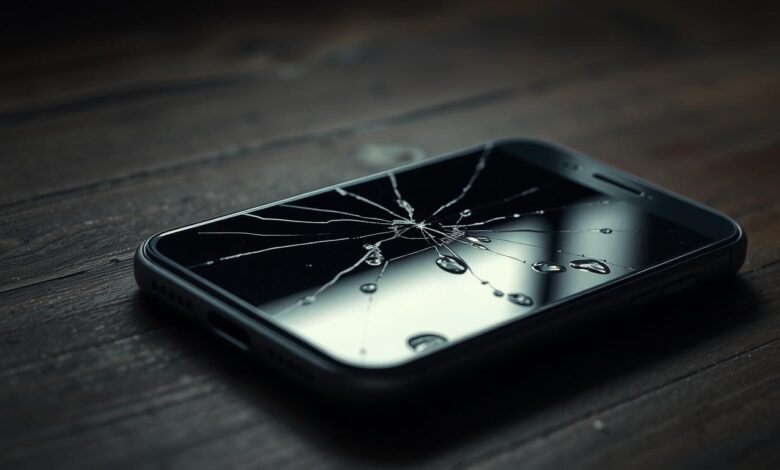
Getting your iPhone wet can cause serious problems. It might lead to water damage that makes your phone stop working. It’s important to know how bad the damage is and act fast to fix it.
I’ll show you how to fix your iPhone step by step. First, you need to check the damage and act quickly to avoid more harm.
If your iPhone gets wet, stay calm and do the right things to lessen the damage. This guide will help you fix your iPhone.
Key Takeaways
- Act quickly to minimize water damage to your iPhone.
- Assess the extent of the damage before taking recovery steps.
- Follow a step-by-step guide to recover your iPhone.
- Prevent further damage by avoiding certain actions.
- Understand the importance of immediate action in saving your device.
Understanding iPhone Water Damage
Knowing how water affects your iPhone is key after an accident. Water damage can seriously harm your device, leading to expensive fixes or making it unusable.
How Water Affects Internal Components
Water can get into your iPhone’s logic board, battery, and other important parts. This can cause short circuits, corrosion, and permanent damage. The damage’s extent depends on how much water gets in and for how long.
Water Resistance Ratings by iPhone Model
Each iPhone model has its own water resistance level. Knowing these ratings helps you understand the risk of water damage. Here’s a table showing the water resistance of different iPhone models:
| iPhone Model | Water Resistance Rating (IP Rating) | Depth/ Duration |
|---|---|---|
| iPhone 7 and later | IP67 | Up to 1 meter for 30 minutes |
| iPhone 11 and later | IP68 | Up to 2 meters for 30 minutes (iPhone 11), up to 4 meters for 30 minutes (iPhone 11 Pro/Pro Max) |
| iPhone 12 and later | IP68 | Up to 4 meters for 30 minutes |
The Liquid Contact Indicator: What It Tells You
The Liquid Contact Indicator (LCI) shows if your iPhone has been in water. It’s found inside the SIM card tray or on the logic board. If it’s been in water, the LCI will turn red or pink. Checking the LCI can tell you if your iPhone’s water damage is covered by warranty.
Act Fast: Immediate Steps When Your iPhone Gets Wet
When your iPhone gets wet, you must act quickly. This can help a lot in iphone water removal and fixing your wet iPhone.
Power Off Your Device Immediately
First, turn off your iPhone right away. This is key because water can cause short circuits if it’s on. To do this, press and hold the sleep/wake button until you see the “slide to power off” slider. Then, slide it to the right.
Remove Case, SIM Tray, and Accessories
Then, take off any case, SIM tray, and accessories. This makes it easier to dry your iPhone. For the SIM tray, use a paper clip or the SIM ejector tool to remove it. For more tips on drying a wet phone, check out wikihow’s guide on saving a wet cell.
Proper Technique for External Moisture Removal
To get rid of water on the outside, gently pat your iPhone with a soft cloth or towel. Don’t rub too hard, as this can push water inside. For drying, you can also use desiccant or silica gel packets, which are good for wet iphone fix methods.
By taking these quick steps, you can greatly increase your iPhone’s chances of surviving water damage. Remember, the most important thing is to act fast and handle your wet iPhone carefully.
Diagnosing the Extent of Water Exposure
Knowing how much water your iPhone got wet is key to fixing it. The damage can vary a lot based on several things.
Assessing Submersion Depth and Duration
How deep and for how long your iPhone was wet matters a lot. A quick splash might not hurt it much. But being underwater for a long time or under pressure can cause serious harm.
- Depth: The deeper your iPhone was, the more water pressure it faced.
- Duration: The longer it was wet, the more damage it could get.
Identifying Affected Areas of Your Device
Look for signs of water damage on your iPhone. Check for corrosion, water spots, or damage in key areas.
- SIM card tray and its slot
- Charging port
- Headphone jack (if your model has one)
- Speakers and microphone grills
- Buttons and switches
Using the iPhone’s Diagnostic Tools
Apple has a built-in tool in the Settings app for general checks. For water damage, look at the Liquid Contact Indicator (LCI). It’s in the SIM card tray or headphone jack. If it’s red or pink, your iPhone got wet.
By looking at these factors and areas, you can figure out how wet your iPhone is. Then, you can pick the best iPhone water damage solutions.
The Rice Method: Does It Really Work?
The rice method is a common fix for water-damaged iPhones. It involves soaking your device in uncooked rice to soak up moisture. Many people use it, but experts and tech fans often question its success.
The Science Behind the Rice Technique
The rice method uses uncooked rice to pull moisture out of your iPhone. Uncooked rice is thought to absorb the water, helping to prevent damage. But, it’s not as good as specialized drying products.
Step-by-Step Implementation for Best Results
To dry your iPhone with rice, follow these steps:
- Turn off your iPhone right away.
- Take off any accessories, SIM cards, and cases.
- Use a soft cloth to gently dry the outside.
- Put your iPhone in a container of uncooked rice.
- Let it sit for at least 48 hours before checking.
Limitations and Potential Risks to Your Device
The rice method can help, but it’s not without risks. Dust and starch from the rice can get into your iPhone’s openings, causing more harm. It might not work for devices damaged by salt water or other liquids. Also, it’s not a surefire fix for all water damage.
When your iPhone gets wet, acting fast is key. The rice method can be a good DIY option. But, knowing its limits helps you decide the best way to dry your device.
Using iPhone’s Built-in Water Eject Feature
When your iPhone gets wet, the built-in water eject feature can save it. This feature, found on newer iPhones, helps remove water and lowers damage risks.
Setting Up the Water Eject Shortcut
To use the water eject feature, you need a shortcut on your iPhone. First, download the Shortcuts app from the App Store if you haven’t. Then, search for “Water Eject” and add it to your shortcuts.
To start the shortcut, follow these steps:
- Open the Shortcuts app and go to the “Gallery” tab.
- Search for “Water Eject” and pick the shortcut.
- Tap “Add Shortcut” to add it to your library.
- To run the shortcut, go to the “Shortcuts” tab, find “Water Eject,” and tap on it.
How to Activate Emergency Water Removal
After setting up the Water Eject shortcut, you can use it to remove water. It works by playing a sound that pushes water out of the iPhone’s speakers.
To start emergency water removal:
- Open the Shortcuts app and go to the “Shortcuts” tab.
- Find and tap on the “Water Eject” shortcut.
- The shortcut will play a sound, and you might see water coming out of the speakers.
Effectiveness Based on Water Exposure Level
The water eject feature works best for light water exposure. If your iPhone just got splashed, it might be enough. But if it’s been underwater for a long time, it might not work.
Key considerations:
- The water eject feature is best for minor water exposure.
- For serious water damage, you might need more drying methods.
- Always turn off your iPhone right after it gets wet to avoid more damage.
Silica Gel and Desiccants: Superior Alternatives to Rice
Drying an iPhone needs careful thought. Using silica gel or desiccants is a better choice than rice. They are more reliable and efficient at drying your device.
Why Professional Desiccants Outperform Household Methods
Professional desiccants like silica gel absorb moisture better than rice. They are very porous and dry your iPhone quickly. This reduces the chance of lasting damage. Unlike rice, silica gel doesn’t leave dust or starch behind.
Some key benefits of using professional desiccants include:
- Higher moisture absorption capacity
- Reduced risk of residue and contamination
- Faster drying times
Creating an Effective Drying Chamber with Silica Gel
To make a drying chamber, you need a sealable container, silica gel packets, and your wet iPhone. Put the silica gel packets at the bottom of the container. Then, place your iPhone on top, away from the desiccant. Seal the container and let it sit for a while.
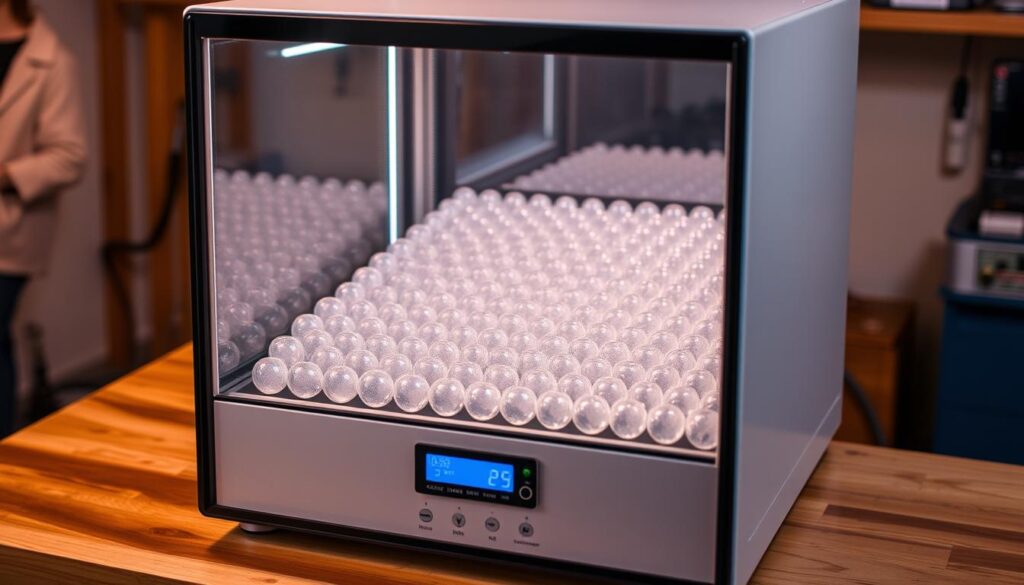
Optimal Drying Time and Temperature Conditions
The best drying time and temperature vary based on water damage. It’s best to keep your iPhone in the chamber for at least 48 hours. The ideal temperature is between 65°F to 75°F (18°C to 24°C). Avoid extreme temperatures to prevent more damage.
Using silica gel or desiccants greatly improves your iPhone’s drying chances. This method is especially good for iphone water damage tips. It offers a proactive and effective solution.
How Do You Get Water Out of Your iPhone Speaker?
If your iPhone’s speaker gets wet, it’s important to get the water out. Water in the speaker can cause muffled sounds, distortion, or even break it if not fixed right.
There are ways to remove water from your iPhone’s speaker. You can use sound frequencies or dry it manually. The best method depends on how wet it is.
Using Sound Frequencies to Expel Water
Using sound frequencies is a good way to get water out of your iPhone’s speaker. Playing specific sounds through the speaker can shake out the water. This method works by making the water droplets vibrate and then get pushed out.
To do this, you can find apps or online tools that play the right sounds. Make sure to use sounds between 20 Hz to 200 Hz. This range helps remove water without harming the speaker.
Apps Specifically Designed for Speaker Water Removal
There are apps made to help get water out of iPhone speakers. These apps are easy to use and guide you through the process. Some popular ones are Sound Frequency and Water Eject. But, how well they work depends on how wet the speaker is.
Also, some of these apps might not be on the App Store. You might need to get them from other places.
Manual Techniques for Speaker and Microphone Drying
There are also ways to dry your iPhone’s speaker and microphone by hand. Tapping the device gently with the speaker down can help. Also, using a soft cloth to pat the outside can help dry it.
To dry it more, put your iPhone in a dry place or use desiccants like silica gel packets. But, don’t use heat like hair dryers. It can damage your device.
| Method | Effectiveness | Precautions |
|---|---|---|
| Sound Frequencies | High | Use correct frequency range |
| Water Removal Apps | Moderate to High | Check app reliability and source |
| Manual Drying | Moderate | Avoid heat sources and vigorous actions |
Using these methods can help get water out of your iPhone’s speaker. This will help it sound better again. Always be quick and gentle when fixing your device to avoid more damage.
Drying Out iPhone Charging Ports and Buttons
After water exposure, iPhone users often face issues with their charging ports and buttons becoming unresponsive or sticky. Water in the charging port and unresponsive buttons are common issues that need to be addressed carefully to prevent further damage.
Safe Methods for Lightning/USB-C Port Drying
To dry out the charging port, you can use a few safe methods. First, gently tap the port against your hand to remove any excess water. Then, use a soft cloth or cotton swab to dry the area around the port. Avoid inserting anything into the port, as this could cause further damage.
Another method is to use desiccants or silica gel packets near the iPhone to absorb the moisture. This method is effective for drying out the internal components, including the charging port.
Addressing Sticky or Unresponsive Buttons
For sticky or unresponsive buttons, start by cleaning the buttons and surrounding areas with a soft, dry cloth. If the issue persists, you can try using a small amount of isopropyl alcohol on the cloth to help dissolve any corrosion. However, be cautious not to let any liquid enter the iPhone’s openings.
- Gently press the buttons multiple times to try and restore functionality.
- Use a soft-bristled toothbrush to clean around the buttons.
- Avoid using harsh chemicals or abrasive materials that could damage the buttons or surrounding areas.
When It’s Safe to Attempt Charging Again
Before attempting to charge your iPhone again, ensure that the charging port is completely dry. Charging a wet iPhone can cause short circuits, leading to more severe damage. Wait at least 5 hours after exposure before attempting to charge, and consider having a professional inspect your device if you’re unsure about its condition.
By following these steps, you can minimize the risk of further damage to your iPhone’s charging port and buttons after water exposure.
Professional Drying Tools and Equipment
Using professional drying tools can greatly help save a water-damaged iPhone. These tools are made to remove moisture and protect against further harm.
Compressed Air: Proper Usage Techniques
Compressed air is useful for getting water out of the iPhone’s small spaces. But, it’s important to use it right to avoid more damage. Hold the can upright to keep liquids out of the iPhone. Then, use short bursts to carefully push out the water.
Isopropyl Alcohol for Corrosion Prevention
Isopropyl alcohol can stop corrosion on the iPhone’s parts. Gently cleaning the wet areas with it can help remove water and lower damage risks. Make sure to use strong alcohol and dry everything well after.
Specialized Drying Chambers and Their Effectiveness
Special drying chambers offer a controlled space for drying wet electronics. They work well because they keep the right temperature and humidity. Here’s a comparison of different drying methods:
| Drying Method | Effectiveness | Cost |
|---|---|---|
| Compressed Air | Moderate | Low |
| Isopropyl Alcohol | High | Moderate |
| Specialized Drying Chambers | Very High | High |
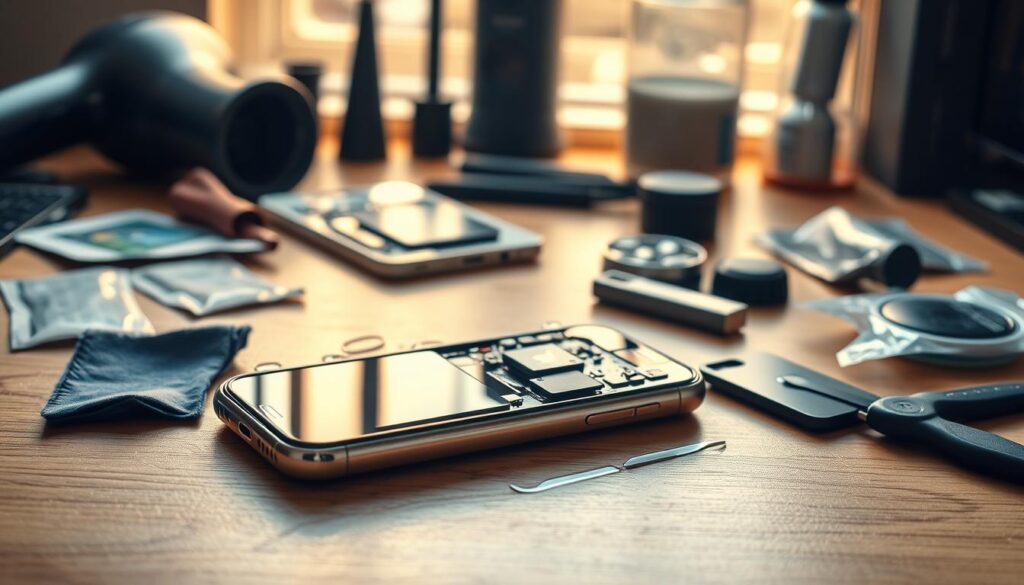
In summary, using professional drying tools and equipment can greatly increase the chances of fixing a water-damaged iPhone. Knowing how to use compressed air, isopropyl alcohol, and drying chambers can help save your device.
Salt Water vs. Fresh Water Damage: Different Approaches
If your iPhone got wet, knowing if it’s salt or fresh water is key. The type of water affects how much damage it does.
The Corrosive Nature of Salt Water on Electronics
Salt water is bad for electronics because it’s corrosive. The salt in it speeds up damage to your iPhone’s parts. So, if it’s been in salt water, act fast to lessen the harm.
Emergency Rinsing Procedures for Salt Water Exposure
If your iPhone got wet with salt water, rinse it with fresh water right away. But do it gently to avoid more damage. For more help, check CNET’s article for immediate steps.
Special Considerations for Pool Water and Other Liquids
Pool water and other liquids can also harm your iPhone. They might be corrosive or cause other damage. Here’s what to keep in mind:
- Pool water: Chlorine is corrosive, so rinse with fresh water.
- Other liquids: Know the chemicals and act accordingly.
- Immediate action: Quick action is vital, no matter the liquid.
Figuring out what liquid your iPhone was in is the first step to fixing it. Whether it’s salt water, fresh water, or something else, knowing how to react can save your device.
Common Mistakes That Make Water Damage Worse
After your iPhone gets wet, it’s key to avoid mistakes that can make things worse. Every action you take matters when dealing with water damage. Making the right choices can greatly improve your chances of iphone water removal success.
Heat Sources and Blow Dryers to Avoid
Many people make the mistake of using heat or blow dryers to dry their iPhone. This can quickly evaporate water but also harm internal parts. It’s better to let your iPhone dry naturally in the air.
Why Shaking Your iPhone Spreads Internal Damage
Shaking your iPhone to remove water can actually spread it inside, causing more damage. This can displace internal parts and push water into dry areas. It’s important to handle your iPhone carefully to avoid further damage.
The Dangers of Premature Powering On
Turning on your iPhone too soon after it gets wet can cause a short circuit. This can lead to more damage or make your device unusable. Wait until you’re sure it’s dry before trying to turn it on. Following these iphone water damage tips can help recover your device.
By avoiding these common mistakes, you can increase the chances of successful water removal. This can also reduce the risk of long-term damage to your iPhone.
When to Seek Professional Repair Services
When your iPhone gets wet, knowing when to get help is key. DIY fixes work for small issues, but serious damage needs a pro.
Signs That DIY Methods Won’t Be Sufficient
If your iPhone still doesn’t work after drying, it’s time for a pro. Look out for these signs:
- Corrosion visible on internal components
- Persistent issues with buttons or ports
- Water damage indicators are triggered
- The device won’t turn on or shows signs of short circuits
Apple Store vs. Authorized Service Providers vs. Third-Party Repair
There are many ways to get your iPhone fixed. The Apple Store and authorized services use genuine parts and offer warranties. Third-party shops might be cheaper but the quality and warranty vary.
Cost Considerations and Insurance Coverage Options
Repair costs vary based on damage and service. Check your insurance to see what’s covered. Some policies include water damage, others don’t.
In summary, knowing when to get professional help for a water-damaged iPhone is crucial. By recognizing when DIY won’t work and exploring your options, you can make the right choice.
Long-Term Effects of Water Exposure
Water damage on your iPhone doesn’t just stop when you dry it. There could be hidden problems that show up later. Even if your phone seems fine after drying, it might still have issues.
Delayed Corrosion and Component Failure
Water can damage the inside parts of your iPhone, which might not show right away. This damage can cause parts to fail, hurting your phone’s performance and lifespan. Keep an eye on your device after it gets wet to spot any problems early.
Monitoring Your iPhone After Successful Drying
After drying your iPhone, watch it closely. Look for signs like unusual battery drain, erratic behavior, or hardware malfunctions. Checking your phone often can help catch issues before they get worse.
Battery Health Concerns Following Water Damage
Water can also harm your iPhone’s battery. Corrosion or short circuits from water can shorten your battery’s life or cause charging problems. Check your battery health in your iPhone’s settings and get it checked if it drops a lot.
In summary, drying your iPhone is just the first step. Understanding and dealing with water damage’s long-term effects is key. By staying alert and taking action, you can keep your phone working well for a long time.
Data Recovery After Water Damage
When your iPhone gets wet, saving your data is key. Luckily, there are ways to get your data back. This depends on how bad the damage is and if you backed up your phone before.
iCloud and iTunes Backup Recovery Methods
If you backed up your iPhone, getting your data back is easier. iCloud and iTunes are great for this. To use an iCloud backup, erase your iPhone and pick “Restore from iCloud Backup” during setup. For iTunes, connect your iPhone to the computer you synced with before and restore it through iTunes.
Professional Data Recovery for Severely Damaged Devices
If your iPhone is really damaged and can’t be fixed, you might need professional help. Data recovery services can try to get your data back. This can be expensive, and it might not work, but it’s worth a try for important data.
Transferring Data to a Replacement Device
If your iPhone can’t be fixed, you’ll need to move your data to a new one. Apple’s “Quick Start” lets you transfer data wirelessly. Or, you can use iCloud or iTunes backups to set up your new device.
| Recovery Method | Requirements | Success Rate |
|---|---|---|
| iCloud/iTunes Backup | Previous backups available | High |
| Professional Data Recovery | Severe device damage | Variable |
| Quick Start Transfer | New iPhone and old iPhone | High |
Preventative Measures for Future Protection
To lower the chance of water damage, take a few simple steps. While accidents can still occur, being proactive can greatly reduce the risk of your iPhone getting wet.
Waterproof Cases and Protective Accessories
Using a waterproof case is a great way to protect your iPhone from water. These cases keep your device safe from water, dust, and other harmful elements. Make sure the case fits your iPhone well and seals properly. Also, think about getting screen protectors and port covers for extra protection.
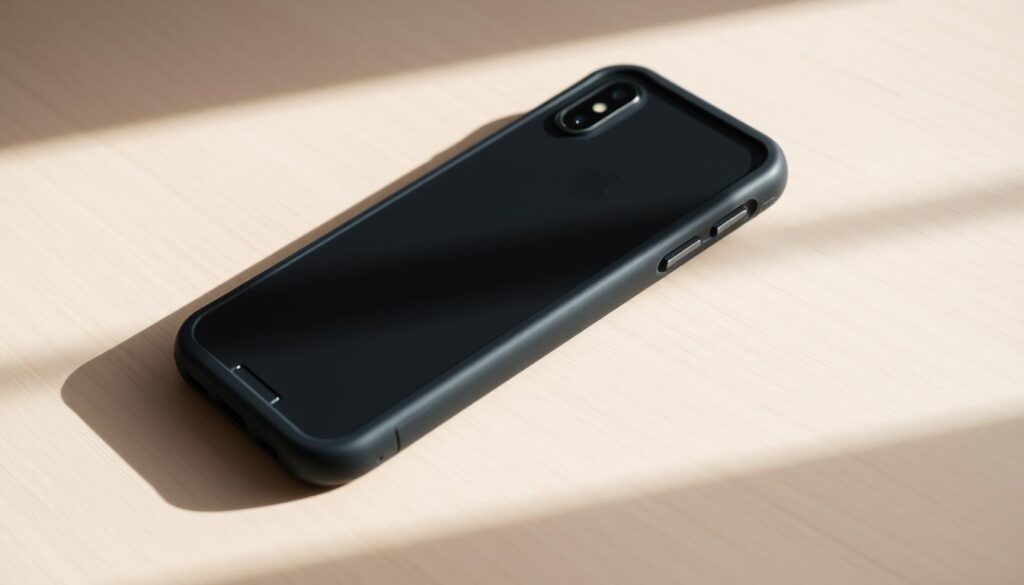
Settings to Enable for Quick Emergency Response
Setting up certain iPhone settings can help you act fast if your device gets wet. For example, you can enable an emergency SOS feature. This lets you quickly turn off your device or access other safety options. To do this, go to your iPhone’s settings, then to “Emergency SOS,” and follow the instructions to set it up as you like.
Creating Regular Backup Routines
Regular backups are key to keeping your data safe if your iPhone gets damaged by water. To set up backups, go to your iPhone’s settings, then to your Apple ID profile. Choose “iCloud” or “iTunes & App Store” to start automatic backups to iCloud or your computer. This way, your important data will be safe, and you can easily get it back if needed.
By taking these steps, you can use your iPhone with more confidence. You’ll know you’re better protected against water damage.
Conclusion: Keeping Your iPhone Safe and Dry
Getting your iPhone back after water damage needs quick action and the right steps. It’s key to act fast and use proven methods for removing water. The guide’s steps, from turning off your device to using silica gel, can help a lot.
For more tips on saving your iPhone from water damage, check out OS X Daily. They offer great advice on how to protect your device. Knowing the risks and taking steps to prevent damage can help keep your iPhone working well.
Using waterproof cases and setting up emergency responses are also important. Backing up your data regularly can save it if your iPhone gets damaged. By following these tips and staying updated, you can reduce the risk of water damage and keep your iPhone in good shape.
FAQ
How do I know if my iPhone has water damage?
Look for the Liquid Contact Indicator (LCI) on your iPhone. It’s a small thing that changes color when wet. You can find it in the SIM card tray or on the logic board.
Can I use a hair dryer to dry my wet iPhone?
No, don’t use a hair dryer or any heat on your wet iPhone. It can harm the inside parts.
What is the best way to dry out my iPhone after water exposure?
Start by gently removing any water from the outside. Use desiccants like silica gel. You can also use the iPhone’s water eject feature. But, avoid using heat or shaking it hard.
How can I get water out of my iPhone speaker?
Try using sound waves to push out the water. There are apps made for this. Or, you can dry the speaker and microphone manually.
Is it safe to charge my iPhone after it’s been exposed to water?
No, don’t charge your iPhone until it’s completely dry. Charging a wet iPhone can cause damage.
Can salt water damage my iPhone beyond repair?
Salt water is very corrosive and can harm your iPhone a lot. But, rinsing it with fresh water and drying it properly can help.
How can I prevent water damage to my iPhone in the future?
Use a waterproof case and turn on settings for quick help in emergencies. Also, back up your iPhone regularly to keep your data safe.
What are the signs that my iPhone needs professional repair after water damage?
If your iPhone still has problems after drying, like unresponsive buttons or poor battery life, it might need a pro to fix it.
Can I recover data from a water-damaged iPhone?
Yes, you can get your data back from iCloud or iTunes backups. Or, if it’s really damaged, use professional data recovery services.
